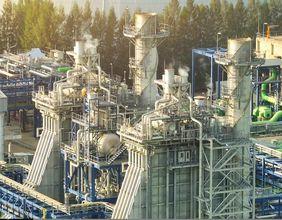Ocadoâs stock plunged after a fire broke out at its flagship robotic Andover warehouse, last week
While the companyâs stock was seen to be performing decently over the years (up 90.44% in last one year), the stock price took a nosedive post the management warned that its sale growth could be poorly hit after a devasting fire that broke at one of its hi-tech warehouses. There were around 200 fire brigades, and 20 fire engines that were called at the Ocado's hi-tech Andover warehouse to deal with the debacle that raged for over hours. The robotic warehouse has 10 per cent of Ocado's total capacity, which is going to hit the company's ability to meet the ballooning consumer demand and there will be weaker sales growth, until Ocado increases the capacity at its other warehouses. The latest fiasco has primarily damaged robotic grids and has led to deferring of operations.
This warehouse has been known to process about 65000 orders per week, and has even enabled the company win four significant deals to sell its technology to international retailers like Kroger and Franceâs casino.
Despite a hard week, the stock was seen to move up 3.5% as at February 09, 2019.
Ocadoâs share price post the debacle hitting its hi-tech warehouse
 Price Chart (Source: Thomson Reuters)
Price Chart (Source: Thomson Reuters)
In terms of financial performance, Ocado lately reported full-year earnings for the financial year 2018 and the key highlights included increase in group revenue and better cash position.
 Financial Performance (Source: Company Reports)
Financial Performance (Source: Company Reports)
Key Milestones (FY18)
Adding Partners to the Ocado Smart Platform: In FY18, Ocado signed an international partnership with Sobeys, ICA and Kroger to develop the Ocado's smart platform (OSP) in the United States of America, Canada and Sweden.
Scaling up business: Company can meet growing new consumer demand by adding more capacity, with the opening of their new CFC (Customer Fulfilment Centre) in Erith, South London, at a full capacity utilisation of GBP 1.2 billion in FY18. The new CFC would be largest automated grocery centre in the world. The company has increased its capacity significantly by adding new CFC at Erith, and now they can execute 30000 orders every week.
Improving the experience of Ocadoâs retail customers: They continue to lead the market for delivery punctuality at 94.9% vs 95% in FY17 and order accuracy at 98.8%, same as that in FY17.
Growing its customer base and winning market share: Total active customers for FY18 stood at 721000 vs 645000 in FY17, reflecting a growth of 11.8%. In FY18, average weekly order stood at 296000 vs 264000 in FY17, depicting an increase of 12.1%. The company retained a high customer loyalty in FY18.
Result Commentary
- Ocado's full-year revenue rose by 12.3%, on account of increase in weekly average orders and fee income earned from their partnerships.
- Companyâs Gross Profit rose by 10.8% from its FY17 GP, on account of higher growth in Solution business revenue than Retail. Margins in Solution business is higher than the Retail business.
- In FY18, there has been a degrowth in EBITDA by 20.7%, as the company's EBITDA for full-year stood at GBP 59.5 million. A steep slide in EBITDA for FY18 is driven largely by the increased resource to develop OSP platform, the opening of new CFC in Erith and increased headcounts.
- Ocadoâs Depreciation, Amortization and Impairment cost has increased considerably by 28.6% in FY18 to GBP 91.3 million as compared to GBP 71 million in FY17. This was primarily driven by the opening of its new CFC in Erith, South London, full-year impact of its fully robotic Andover warehouse, and associated software required for these projects.
- Operating cash flow for FY18 stood at GBP128.4 million vs GBP 116.9 in FY17, that is it increased by 10.34%.
While the existing situation has put the future performance in doldrums, it is essential to see the how the group can strategize and mitigate sales related challenges.






